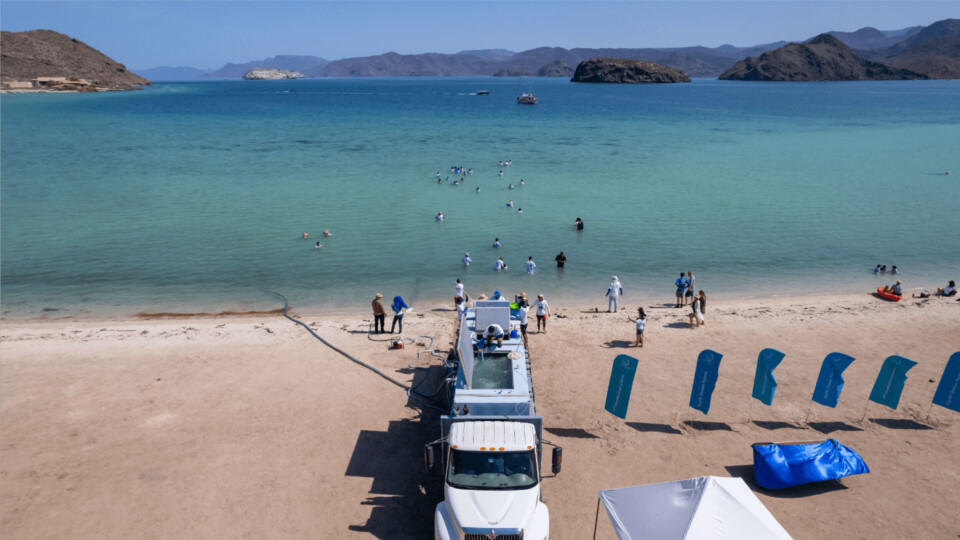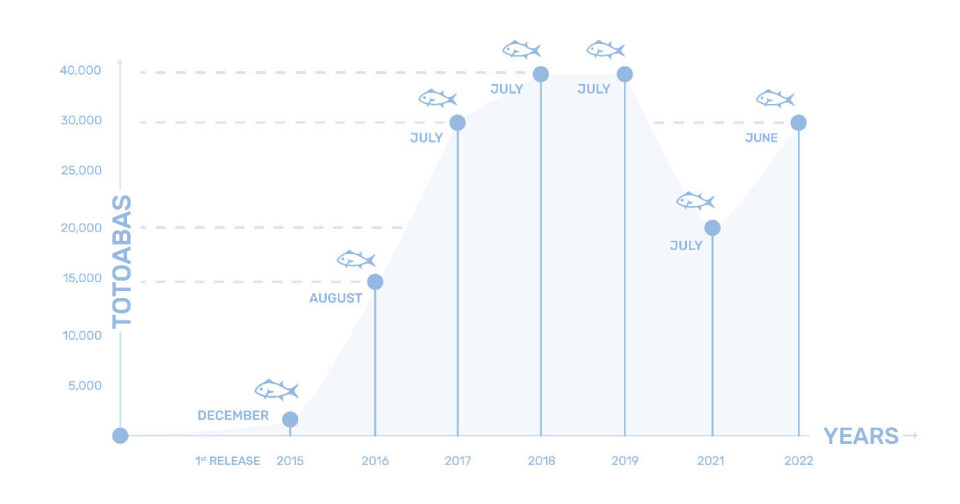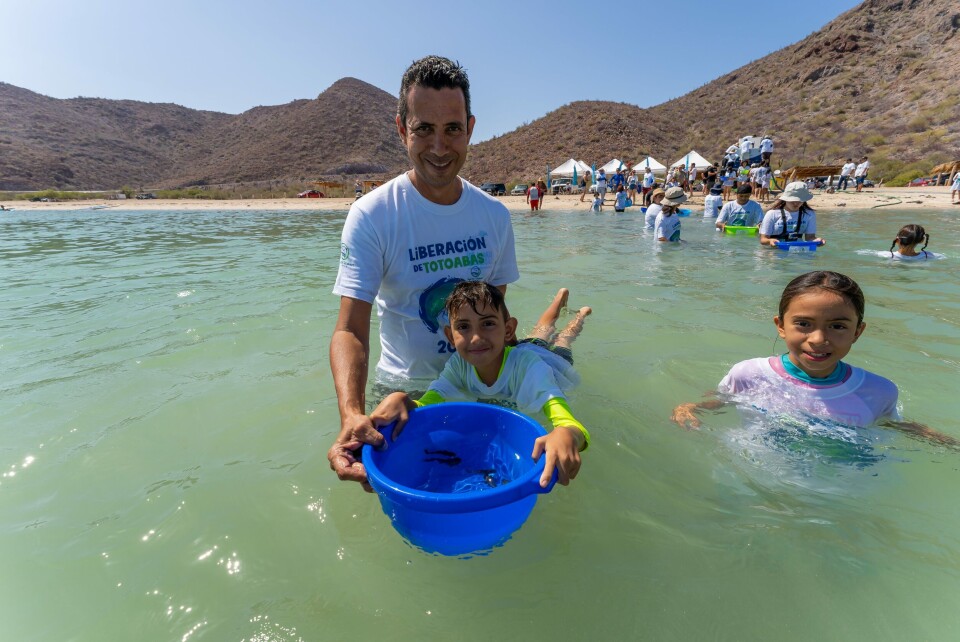
Fish farmer releases juveniles into wild to protect iconic species
Fish farmer Earth Ocean Farms (EOF), which grows totoaba and red snapper off the coast of the Baja California peninsula in Mexico, has carried out its seventh release of hatchery-raised totoaba into the wild.
The release of 30,000 juveniles was the seventh annual stocking of totoaba into the Sea of Cortez by Earth Ocean Farms and brings the total number of fish released to 175,000.
The totoaba population is threatened in the wild because of man-made changes to its breeding area and poaching for its swim bladder, which is used in traditional medicines in China and can fetch up to £15,000 on the black market.

Colorado River
In the wild, totoaba spawn in the Colorado River Delta, which also serves as a nursery for the young fish. But diversion of water from the Colorado River within the United States means little or no fresh water now reaches the delta.
“Over the past seven years, we have released 175,000 juvenile totoaba. This means a lot to us, it is a contribution to the environment, to the protection of this iconic species for Mexico that only exists in the Sea of Cortez,” said EOF commercial director Israel Marqueda in a press release.
The release was carried out in collaboration with governmental organizations and NGOs of Mexico in the bay of Santispac, in the municipality of Mulegé in Baja California Sur. Local community and youth organisations in Mulegé also participated in the release.

Community
“For us, the involvement of the community in these events is fundamental, especially that of the children, because a sustainable future depends on the investment of future generations,” said Marqueda.
“The fact that the children get to release the fish into the water gives them a sense of responsibility for the hatchlings and helps them become more aware of what the positive long-term impacts will be.”
Success indicators from previous releases show that up to 98% of juveniles surviving the 484-kilometre, nine-hour journey north by truck from EOF’s hatchery at La Paz, and subsequent release.
Population monitoring of the species in the Sea of Cortez is carried out by government institutions that regulate fisheries in Mexican seas and have the necessary technical infrastructure and professional staff to carry out the studies.























































